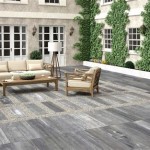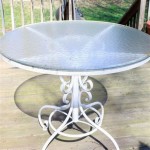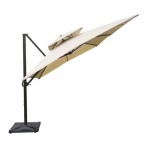How To Insulate Patio Doors For Winter
Patio doors, while offering aesthetic appeal and convenient access to outdoor spaces, can be significant sources of heat loss during the winter months. Their large glass surfaces and often less-than-ideal sealing can lead to drafts and increased energy bills. Effectively insulating patio doors is therefore crucial for maintaining a comfortable indoor temperature and reducing heating costs. This article provides a comprehensive guide to various methods for insulating patio doors to prepare for the winter season.
Understanding the mechanisms of heat loss through patio doors is essential for choosing the most appropriate insulation strategies. Heat primarily escapes through three avenues: conduction, convection, and radiation. Conduction refers to the transfer of heat through the door's materials, particularly the glass and frame. Convection occurs when warm air near the door cools and sinks, creating drafts. Radiation involves the emission of heat from warmer surfaces to colder ones, primarily through the glass.
Addressing these heat loss mechanisms effectively requires a multifaceted approach. This includes improving the door's sealing, adding insulation to the glass surface, and potentially modifying the door frame to enhance its thermal performance. The selection of specific methods will depend on factors such as the type of patio door, the severity of the winter climate, and the homeowner's budget.
Addressing Air Leaks: Weatherstripping and Caulking
One of the most common causes of heat loss around patio doors is air leakage. Gaps and cracks around the door frame and between the door panels allow cold air to enter and warm air to escape. Addressing these air leaks is a fundamental step in insulating patio doors for winter.
Weatherstripping involves applying strips of material to the door frame and along the edges of the door panels to create a tight seal when the door is closed. Various types of weatherstripping are available, including foam, felt, vinyl, and rubber. Foam weatherstripping is inexpensive and easy to install, but it may not be as durable as other options. Felt weatherstripping is also relatively inexpensive and works well for filling small gaps. Vinyl and rubber weatherstripping are more durable and provide a better seal, but they may be more difficult to install.
To install weatherstripping, first clean the surfaces where it will be applied. Remove any dirt, dust, or old adhesive. Measure the length of the door frame and door panels, and cut the weatherstripping to the appropriate size. Peel off the backing from the adhesive and carefully apply the weatherstripping along the edges, ensuring a tight and consistent seal. Pay particular attention to areas where the door panels meet the frame, as these are common areas for air leakage.
Caulking is another effective method for sealing gaps and cracks around the door frame. Caulk is a flexible sealant that can be applied to fill larger gaps that weatherstripping cannot adequately address. Choose a caulk that is specifically designed for exterior use and is resistant to weather and temperature changes. Silicone caulk is a good option for sealing gaps around patio doors, as it is durable and remains flexible over time.
Before applying caulk, clean the area thoroughly and remove any old caulk. Use a caulk gun to apply a bead of caulk along the gaps, ensuring that it fills the space completely. Smooth the caulk with a wet finger or a caulk smoothing tool to create a neat and professional finish. Allow the caulk to dry completely before exposing it to moisture.
Inspecting the weatherstripping and caulking around the patio door should be done regularly, especially before the onset of winter. If any cracks or gaps are noticed, reapply weatherstripping or caulk as needed to maintain a tight seal.
Improving Glass Insulation: Window Films and Thermal Curtains
The large glass surface of patio doors is a significant source of heat loss through conduction and radiation. While replacing the doors with energy-efficient models featuring low-E glass and insulated frames is a long-term solution, there are more affordable and less invasive methods for improving the glass's insulation properties.
Window films are thin, transparent sheets that are applied to the glass surface to reduce heat transfer. Reflective window films can block a significant amount of radiant heat from entering or leaving the room, depending on the film's properties. Low-E window films are designed to reduce heat loss in winter by reflecting heat back into the room. These films can be applied to single-pane or double-pane glass and can significantly improve the door's insulation performance.
Installing window film is a relatively simple process. First, clean the glass surface thoroughly with a glass cleaner. Measure the glass and cut the window film to the appropriate size, leaving a small margin for trimming. Peel off the backing from the film and apply it to the glass surface, starting from one corner and working your way across. Use a squeegee to remove any air bubbles and smooth out the film. Trim any excess film with a utility knife.
Thermal curtains are another effective way to reduce heat loss through patio doors. These curtains are made from heavy, tightly woven fabrics that provide an extra layer of insulation. Thermal curtains can block drafts and reduce the amount of heat that escapes through the glass.
When choosing thermal curtains, look for those that are labeled as "thermal" or "insulated." These curtains typically have multiple layers of fabric, including a layer of batting or foam that provides additional insulation. Choose curtains that are long enough to reach the floor and wide enough to completely cover the patio door when closed.
To maximize the effectiveness of thermal curtains, install them close to the door frame and ensure that they are properly sealed on all sides. Consider using a curtain rod that wraps around the sides of the door to prevent drafts from entering around the edges of the curtains. During the day, open the curtains to allow sunlight to enter the room and warm the space. Close the curtains at night to trap heat and reduce heat loss.
Combining window films and thermal curtains can provide a significant improvement in the insulation performance of patio doors. Window films reduce heat transfer through the glass, while thermal curtains provide an additional layer of insulation and block drafts.
Addressing the Door Frame: Insulation and Sealing
The door frame itself can also be a source of heat loss, especially if it is made of a material that is not a good insulator, such as aluminum. Insulating the door frame can help to reduce heat loss and improve the overall energy efficiency of the patio door.
One way to insulate the door frame is to apply foam insulation around the frame. Spray foam insulation can be injected into the gaps between the frame and the wall to create a tight seal and prevent air leakage. This is particularly effective for older homes where the door frames may not be perfectly aligned with the walls. Ensure the foam used is appropriate for the material of the frame to avoid damage or corrosion.
Another option is to wrap the door frame with insulation wrap. This type of insulation is made from a thin layer of foam or fiberglass that is wrapped around the frame and secured with tape. Insulation wrap can help to reduce heat loss through the frame, but it is not as effective as spray foam insulation.
In addition to insulating the door frame, it is also important to seal any cracks or gaps around the frame to prevent air leakage. Use caulk to seal any gaps between the frame and the wall, and apply weatherstripping to the edges of the frame to create a tight seal when the door is closed.
If the patio door frame is in poor condition or is made of a material that is not a good insulator, consider replacing it with a more energy-efficient model. Modern patio doors are often made with frames made of vinyl or fiberglass, which are better insulators than aluminum. These frames also typically feature better sealing and insulation properties, which can significantly reduce heat loss.
Regular maintenance of the door frame is also essential for maintaining its insulation performance. Check the frame for cracks or damage regularly, and repair any issues promptly. Clean the frame regularly to remove dirt and debris that can compromise its sealing properties.
By addressing the insulation of the door frame, homeowners can further enhance the effectiveness of their winterization efforts and reduce energy consumption.

Condo Blues 6 Ways To Insulate A Drafty Sliding Glass Door

Condo Blues 6 Ways To Insulate A Drafty Sliding Glass Door

It S Cold In My House How Do I Insulate Sliding Doors For Winter Boggs

How To Insulate Your Glass Sliding Door Window World

Patio Door Transparent Vinyl Sheeting Installation Youtube

How To Insulate Sliding Glass Doors For Winter Doctor

5 Ways To Winterize Sliding Glass Doors Aluminum Windows Vinyl Building Products

It S Cold In My House How Do I Insulate Sliding Doors For Winter Boggs

How To Insulate Sliding Glass Door

Insulating A Sliding Glass Door
See Also








